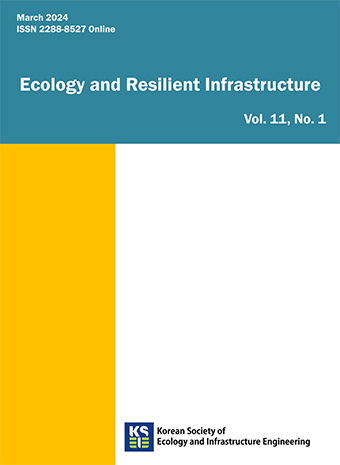Original Article
Abstract
References
Information
Hwang, Y., Lee, S., Do, H., Lee, Y., Son, T., Kwon, T., Han, J., Kang, D., and Kim, J. 2009. The analysis of PM10 concentration and the evaluation of influences by meteorological factors in ambient air of Daegu Area. Journal of Korean Society for Atmospheric Environment 25(5): 459-471.
10.5572/KOSAE.2009.25.5.459
Lee, J., Lim, Y., Choi, K., Nam, K., Lee, H., Lee, Y., Park, H., Myong, J., Kim, T., Jung, M., and Jang, L. 2017. A Study on Quantitative Estimation of Emission Sources and Regional Contributions to Air Quality on Forecasting Areas (I). (NIER-RP2017-149). Incheon: National Institute of Environmental Research
- Publisher :Korean Society of Ecology and Infrastructure Engineering
- Publisher(Ko) :응용생태공학회
- Journal Title :Ecology and Resilient Infrastructure
- Journal Title(Ko) :응용생태공학회 논문집
- Volume : 9
- No :1
- Pages :36-58
- Received Date : 2021-11-16
- Revised Date : 2022-01-05
- Accepted Date : 2022-02-18
- DOI :https://doi.org/10.17820/eri.2022.9.1.036




 Ecology and Resilient Infrastructure
Ecology and Resilient Infrastructure







